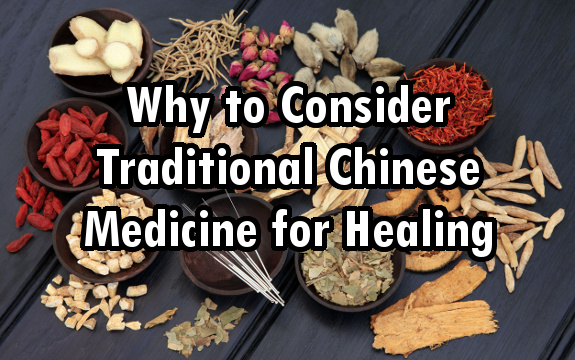Why to Consider Traditional Chinese Medicine for Healing

 What’s energetic medicine about? How do emotions relate to vital organs and vice-versa? Western “fringe” alternative medicine and even some mainstream medical research are beginning to catch in these areas. But Traditional Chinese Medicine (TCM) has thoroughly explored these areas for centuries – and you can benefit.
What’s energetic medicine about? How do emotions relate to vital organs and vice-versa? Western “fringe” alternative medicine and even some mainstream medical research are beginning to catch in these areas. But Traditional Chinese Medicine (TCM) has thoroughly explored these areas for centuries – and you can benefit.
Modern Western medicine tends to rely heavily on expensive equipment for both diagnosis and treatment while TCM does not. That translates to lower expenses and cost. Yet most Western disease treatment coverages won’t cover TCM. That’s a major purpose of health coverage no matter what type – to keep the majority in the medical mafia matrix.
But here are a few TCM basics. Another article will have some tips on how to take advantage of TCM’s therapeutic wisdom on a budget.
TCM Basics for Beginners
The basic idea of TCM is the notion of healing the body, or creating balance and harmony, with all organs while retaining them. The whole language and approach of TCM is different than Western medicine’s totally biological and biochemical systems approach. The practice of removing organs to promote health, even a gall bladder, is repugnant to TCM practitioners. They work on restoring that organ’s qi, or chi.
But what is chi? It is a subtle energy that is beyond body tissues. Stagnant or blocked qi (chi) must be addressed to restore strong and balance chi energies. Mainstream medical technology doesn’t perceive or understand it, but TCM recognizes three basic types of qi (chi).
The Importance of Chi
Here are 3 types of Chi:
- We are born with ancestral chi (qi); it’s our foundational wellspring which is sometimes tapped into or eroded.
- Then there’s post-natal chi, that which we obtain from our diet, exercise, and our environment. We can directly influence that.
- Then there’s protective chi that flows around the body at the surface. So qi or chi is essential for the body’s operation and homeostasis.
Each organ has its own chi as well. Most are familiar with the terms yin and yang, female and male aspects of universal creation, which are also reflected in all chi energies. Earthly elements such as wood, heat, cold, and damp are among the concepts used in diagnosis, which involves pulse reading, an art that enables an experienced practitioner to detect even future health problems, and examining features of the tongue of which most are unaware.
TCM also recognizes digestion as the root of good or bad health, another aspect of health that has recently been probed slightly in the West.
2 Treatment Modalities of TCM
The two treatment modalities of TCM are herbs and acupuncture. There have been many studies on how well TCM herbs work for even serious diseases, and how acupuncture streamlines treatments for any health issue one has.
The herbs are tried and true and have been for centuries. It’s only recently that Chinese herbs have undergone the so-called golden standard of medical trials of Western medicine, double-blind random testing, which is to a large degree ensuring minimal poisoning from pharmaceuticals. The purpose of TCM trials is to prove TCM’s efficacy to an arrogant medical system that has shoved aside other better, less expensive, and less toxic healing approaches. Here are some of those trial reports.
Chi (qi) pathways have been mapped out as chi meridians over the millennia. Acupuncture needle placements adjust and/or unblock those meridians to balance, moderate, and free chi energy to flow throughout the body.
For serious physical traumas and other extreme emergencies, Western allopathic medicine is tops. But let’s not confuse those necessary extreme interventions with healthcare and disease ‘curing’. TCM and other ancient protocols such as India’s ancient Ayurveda are part of a holistic healing process for complete health, disease prevention, and disease recovery.
